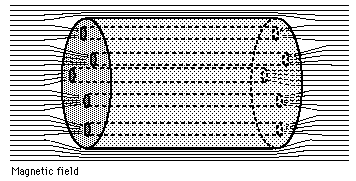
 |
| Plasmonic nano-lens quasar shaped hologram |
 |
| Hubble finds 3 new quasar gravitational lenses |
New Hubble telescope images by Djorgovski shows three new quasar cases acting as a gravitational lens inside galaxies. Full-color holograms produced by a new metallic nano-lensing technique by Kawata and Ozaki at RIKEN, far better explains how quasars are actually magnified holographic images projected through central galaxy filaments containing thin layers of metallic atoms organized by magnetic fields. Surface plasmons are collective oscillations of free electrons within metallic atoms that produce full-color holograms that can be viewed from any angle just like the original, says Kawata. Quasar gravitational lenses are rare observational findings requiring extremely rare line of sight filament alignments with galactic black holes acting as a magnifying superlens. Plasmonic quasar holograms can be observed from any angle, and appear just like a miniature solar system sized scaled down version of its larger parent host galaxy.
 |
| Holographic Galaxy lensing of filaments |
 |
| Long distance holographic image transfer through metallic nano-lensing produces magnified color holograms. A dipole object ( black hole having polarity) is near one end of the rod (galaxy filament) and the light energy travels through the resonating plasmon modes to the other end of the rod producing the quasar hologram. Phony supermassive black holes would not be powering tiny solar system sized quasars if they are magnified scaled down galaxy component holograms having enormous energy output powered and produced by lasers from larger plasma based parent galaxies. |
 Quasar holograms are laser powered metallic nano-lensed plasmons viewable from any 3-D orientation by plasmonic holography
Quasar holograms are laser powered metallic nano-lensed plasmons viewable from any 3-D orientation by plasmonic holography |
| Binary Quasars Interact Electromagnetically |









No comments:
Post a Comment